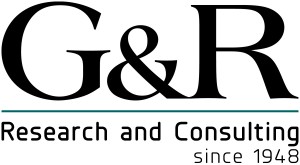Corporate advertising is sometimes portrayed as a wasteful use of corporate resources. Critics say it is self-indulgent ego-stroking by management that often backfires to reflect negatively on the company and/or is seen by consumers who don’t like or understand it. (See typical talking points with a good example of how not to do corporate advertising here.) Some go further and suggest it is subversive. (See this classic 1970 essay by Milton Friedman.) When done right, though, corporate advertising is a valuable tool for facilitating corporate survival.
Successful corporate advertising helps companies shape a coherent umbrella identity for their disparate products and activities and, for companies with contentious public relations issues, advance viewpoints and mitigate image problems. It does this through messaging that builds positive perceptions among the company’s many capital providers, including customers, public opinion leaders, employees, and shareholders. It differs from traditional brand advertising in that it is centered on the company and the benefits of the corporation to society, rather than an individual product produced by the company and simply increasing profits by acquiring and retaining customers.
Like all advertising campaigns, good corporate advertising is effective on different levels. Its value is always a function of its objectives and the quality of its content.
Two Successful Examples: Exxon and Chevron
Exxon and Chevron are both large, diversified companies that operate in controversial industries. Not surprisingly, both companies maintain extensive, multi-layered corporate advertising campaigns that cover similar issues. They both use corporate advertising to promote accomplishments, showcase personnel, reinforce industry importance, and address contentious industry issues, such as pollution, sustainability, and trust. However, each company chooses to emphasize different elements of the issues and uses different styles of persuasion to register their points. Current Exxon spots more typically center on concerns that directly relate to its businesses and are crafted to resonate with large audiences. Chevron talks industry issues as well, but is willing to wade into deep social waters. The two companies’ similarities and differences in approach can be seen in how each talks about education and AIDS.
Education
The two companies take different tacks in promoting the importance of education. Exxon, as part of a longstanding focus on encouraging math and science education uses its “Energy Lives Here” campaign to feature advertising encouraging more Engineers. For example, this ad uses a sequence of appealing young people talking about being able to change the world by being an engineer:
https://www.youtube.com/watch?v=d1d2zSvPhAc
Chevron’s “We Agree” Human Energy campaign also has a pro-science education component, but with advertising that targets local education. This ad features an 8th grade student and a Chevron geologist talking about the importance of science education in the schools:
https://www.youtube.com/watch?v=DpP2mH6jSoI
AIDS
Both companies also promote AIDS awareness. Exxon’s program is more modest than Chevron’s. Called StopAIDS, it is described on their website but does not currently have its own TV element.
Chevron, on the other hand, both describes the program on its website and runs advertising that targets the AIDS battle. A recent example is this ad that shows Nigerian women and Chevron employees talking about their resolve to defeat AIDS.
https://www.youtube.com/watch?v=DHG1_i-fLHk
Further, Chevron sponsored a social media contest that invited people to create their own treatment of the AIDS discussion. The contest’s evocative winner can be seen here:
https://www.youtube.com/watch?v=5xglTbwSpEo
Discussion
Exxon’s “Be an Engineer” is noteworthy because it shows the ability of corporate advertising to advocate for an issue integral to its business and employees among a broad audience (effectiveness). It tells an engaging story, is visually attractive, is reasonably seamless in how it integrates the company affiliation, and engages a large audience (on YouTube, it has more than 3.4 million views). Chevron’s “AIDS Is Going to Lose” is noteworthy because it shows the ability of corporate advertising to meaningfully tackle grave social issues (non-subversive). While not attracting as large an audience (on YouTube, it has less than 2 thousand views), it is also well-crafted, visually attractive and tells an engaging story. Exxon succeeds in appealing to a broad audience and Chevron succeeds in taking on a gravely important social issue. Both promote institutional worth and humanize their companies, while painting distinctive values that reflect well on the sponsors and facilitating their survival.
Neither, however, is as strong as what is still for us the gold standard in corporate advertising. In 1987, DuPont ran a commercial telling the story of Vietnam War veteran Bill Demby playing basketball with friends and doing what he dreamed about doing. The announcer then explained that DuPont material makes artificial limbs more life-like, enabling the soldier who lost both legs during an explosion to still experience joy on the basketball court. “DuPont. Better things for better living.” It talks about issues that are important to both the corporation and the public in a very human way.
Recap
The Exxon and Chevron executions show that corporate advertising can succeed on different levels. The Exxon education spot takes an issue that is important to its business and makes it engaging to a broad audience. The Chevron AIDS spot tackles a difficult issue that is important to us as individuals and deepens our awareness of it. Good corporate advertising can engage people about the company (Exxon’s breadth) or work to improve the human condition (Chevron’s depth). Great corporate advertising can do both (DuPont’s Demby).

Comments are closed.